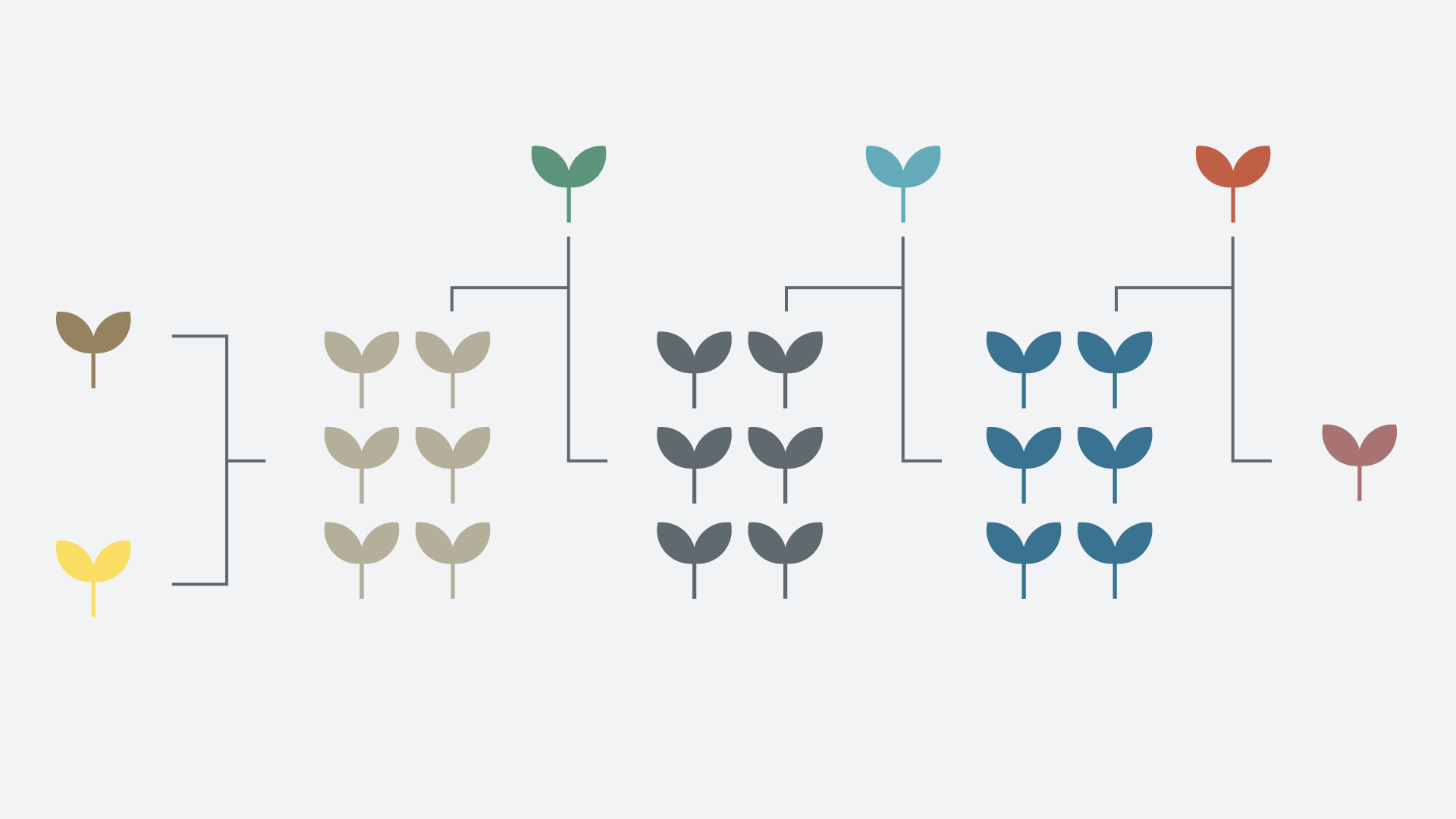Crossing
Breeders want to provide agrarians with optimally adapted crops. This requires combining many positive characteristics in one single variety. The desired properties include a very good yield; resistance to pathogens; a high starch, protein or sugar content; and good lodging in the field. To be able to combine all these properties in one single variety, parent plants carrying the desired characteristics are cross-bred. This creates a filial generation.
In the best-case scenario, this will include a few individual plants that carry the positive traits of both parents. Only then does the crossing experiment achieve the desired results. In a next step, breeders cross-breed this offspring with other plants that have other desired properties. Several cross-breeding stages later, a new line is created that ultimately combines all beneficial characteristics and, after several testing phases, can be registered as a new variety. This process is time and labor intensive. It must be carefully planned and implemented over several years.


